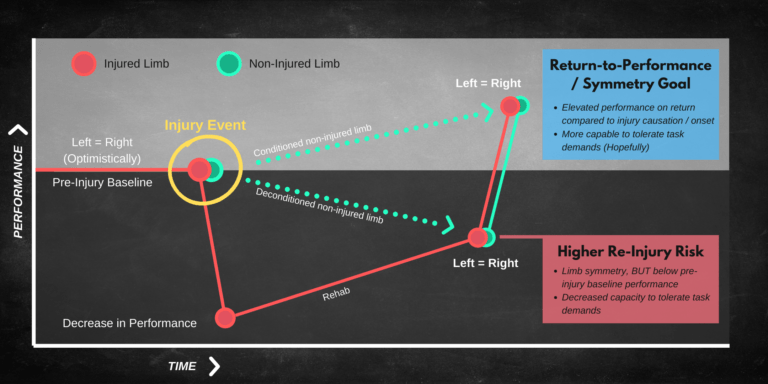We place a lot of stock in limb symmetry but critically we need to couple this with performance
During a conversation with Mick Hughes (soon to be released as a podcast) we discussed the significance & need for baseline information during RTP benchmarking. Especially in the context of a potentially de-conditioned uninvolved limb becoming the non-aspirational standard to meet.
If the uninvolved limb deconditions and further down the line a desired level of limb symmetry is achieved, but in the absence of the performance metrics being of at least the standard it was pre-injury then were in a risky situation.
As an example the triple hop test during ACLR might only be measured post injury. Now It’s not to say don’t use this test (Do) – instead we must be comfortable to place some value in this/a validated test coupled WITH whatever less sterile or objective information we have at our disposal. Ultimately It’s vital that we use outcome measures that we can relate to the athletes pre-injury state, even if that imperfect information is less specific to the symmetry values or evidence.
If you’ve got clean and validated pre-injury baseline data then lucky you, use it! But If you don’t consider being careful with the context of symmetry. Make sure you don’t forget to focus equally on what level of performance that symmetry occurs. Ultimately the end goal is not symmetry alone – the goal is for the tissue/limb/athlete to tolerate the task demands and be able to repeat it safely and consistently – the “performance” if you will.


